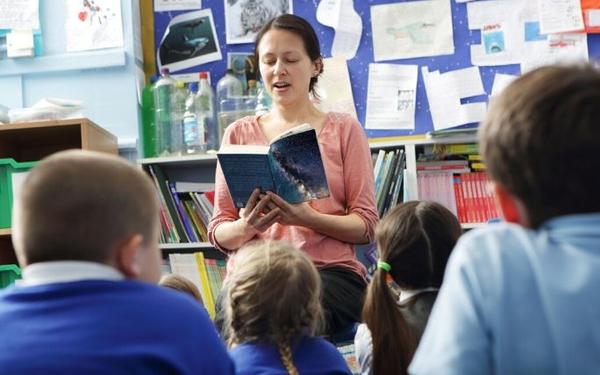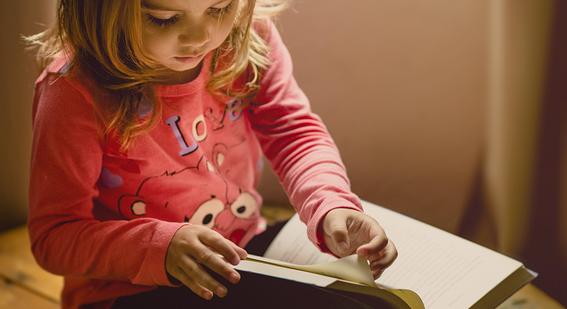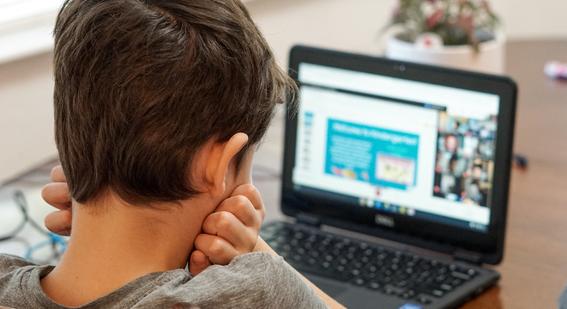The impact of Coronavirus on education in the UK
As COVID-19 escalated from a matter of minor concern in the UK, up to a major crisis, parents and teachers became increasingly agitated about what the government would do about schools.Gavin Williamson, the Secretary of State for Education, ended the weeks of worry on March 18th with three major announcements.

By Laura McInerney
First, all schools in the UK would close to the general student population from the end of that week. This suspension of normal schooling would go on “until further notice”. Schools would still remain open to the children of key workers (such as nurses, police officers and delivery drivers) and other students would be given access to online learning facilities.
Second, Williamson announced the cancellation of all national examinations for the year. This was followed by later announcements from the bodies responsible in each of the UK’s nations - England, Wales, Scotland and Northern Ireland - that exam grades would be assigned using teacher judgement and standardised using other data where it existed.
Third, it was announced that schools would continue to hold responsibility for providing a daily meal to students from low-income families. Schools were given the agency to meet this requirement in the way they deemed best, although a national guaranteed voucher scheme was slated to be operational within a few weeks.
Each of these announcements in isolation would be enough to upend the whole educational ecosystem. Taken together, they form perhaps the most epochal 9-minutes of speech in the UK’s education history.The consequences of these changes, both in the short and long-term, are enormous in ways the country is still trying to understand.
Using data from Teacher Tapp, a daily surveying app for around 8,000 school teachers, predominantly in England, we know that around 90% of teachers are now teaching from home on any given day. A small fraction - less than 10% of secondary teachers and around 20% of primary school teachers - are working in school at least one day of the week.Eighty per cent of teachers who have children under the age of 18 are looking after them at home alongside their job. This covers around a third of the teaching profession, meaning these teachers are juggling the care and homeschooling of their own child with their usual teaching duties.
This may be one reason why teachers have reported working fewer hours each day than they would if in school. According to past Teacher Tapp data, we find that most teachers work around 10 hours per day on average. In a similar survey conducted last week, 75% of teachers reported working less than 7 hours per day, and 40% worked less than 5 hours.
Personal childcare responsibilities played a role in this reduction, but so did several other factors. Much of the typical and time-consuming work of a teacher, such as providing pastoral and extra-curricular support to students, has now been offloaded onto parents. The majority of secondary schools teachers are also no longer providing full teaching to the two year groups - Year 11 and Year 13 - who have now had their exams cancelled.Eliminating the daily commute from teachers’ itinerary (which Teacher Tapp surveys show is typically around 30 minutes each way in the UK) is also likely to shift perceptions of how long they are spending working.
There’s also a real possibility that the tools and methods teachers are using to teach remotely may be reducing their workload. 82% of secondary teachers told Teacher Tapp that they have been using an online learning platform to send work to students. Meanwhile, primary schools have largely preferred to send physical work home or to publish instruction lists for parents on their school website. This approach means that teachers are receiving a smaller amount of work back from students, in many cases reducing their marking and assessment workload. Primary teachers, plus those in subjects which lend themselves to more direct instruction, such as maths and languages, are also making use of online applications which have automated activities and assessment functionality.
Although this approach to online learning represents the norm, there is a significant disparity between the provision of the state and independent sectors. The majority of independent schools are providing more instruction to students via live-streamed online lessons where students interact with their teachers. Independent secondary teachers are three times more likely than their state sector counterparts to have spoken to students through online video conferencing.
This disparity may be driven by the need for independent schools to justify the fees they are still charging parents. Some schools have already discounted a little this term, and there is a suspicion that some are colluding to give a 30% reduction for next year – with the UK’s financial regulator stepping in to remind the private school sector that negotiating prices across the sector is not allowed. (In the UK this behaviour is considered to be uncompetitive and fifty private schools were fined in 2010 for price-fixing behaviours).
The difference between state and independent schools may also indicate a high degree of preparedness by such schools. A few weeks before the lockdown began, Teacher Tapp surveyed schools about their existing platforms, and found the majority of private schools already had online learning platforms and video-conferences set up. The state sector was far behind and so had to rush to catch up while dealing with many other difficulties.
One of the clear ways this inequality manifests is the amount of work students are completing at home. According to Teacher Tapp data, most teachers agree that an average Year 8 (13-year-old) student should be completing at least three hours of work per day, but the likelihood of them actually completing this amount seems to depend largely on their background. In independent schools, 70% of teachers estimate that their students are meeting or exceeding this 3-hour target, while the same is true of only 10% of teachers working in the most disadvantaged state schools. Indeed, in state schools located in the most deprived areas, half of teachers estimate that their students are completing less than an hour of work per day. This matches with parent polling conducted by Parent First, where 1-in-3 parents also estimated that their child was completing less than three hours of school work per day.
The impact of school closures and lockdown has taken its toll on teachers, with the majority of teachers stating they believe that it has negatively affected their mental health. Of this group, younger teachers living at home with their parents or in house shares seemed to have been the worst affected.
With epidemiologists and climate scientists forecasting that global pandemics may become more common in the future, it’s important to learn from the current crisis. What are the major lessons?
First, there is a big disparity in the readiness of the private and state sector to deal with crises that involve periods at home. The relative smaller class sizes and wealth of parents who send their children to private schools gives more latitude to assume children can access devices and so the schools are more likely to have already adopted them. Whether live-streaming is a positive thing from a parent or student perspective is yet to be established, but the difference in real-time access to teachers is certainly a real inequality in the current situation and could continue in the future.
Secondly, there is a difficulty with researching education once children are no longer in schools. Teacher Tapp participation is decided by individual teachers, as opposed to schools, so the survey has continued even while schools have been closed. However, we are not currently able to understand what is happening in the home - and this may be critical for ensuring children are accessing learning and planning future responses.
Finally, we have seen from the dramatic dip in teacher working hours that much of the usual long working hours of the job actually relate to tasks outside of teaching - including behaviour and pastoral management and extra-curricular activities. And we have seen that online applications can reduce other workloads, such as marking and activity-setting. Could this be used more in future to reduce the usual 50-hour work-week?
Laura McInerney is an education journalist and co-founder of the daily survey platform, Teacher Tapp. She taught for six years in London high schools, before undertaking a Fulbright Scholarship and then beoming a columnist for The Guardian newspaper and editor of the investigative paper Schools Week. Laura now runs Teacher Tapp, a daily survey platform that she co-founded with Professor Becky Allen, which has over 7,000 teachers answering each day.




